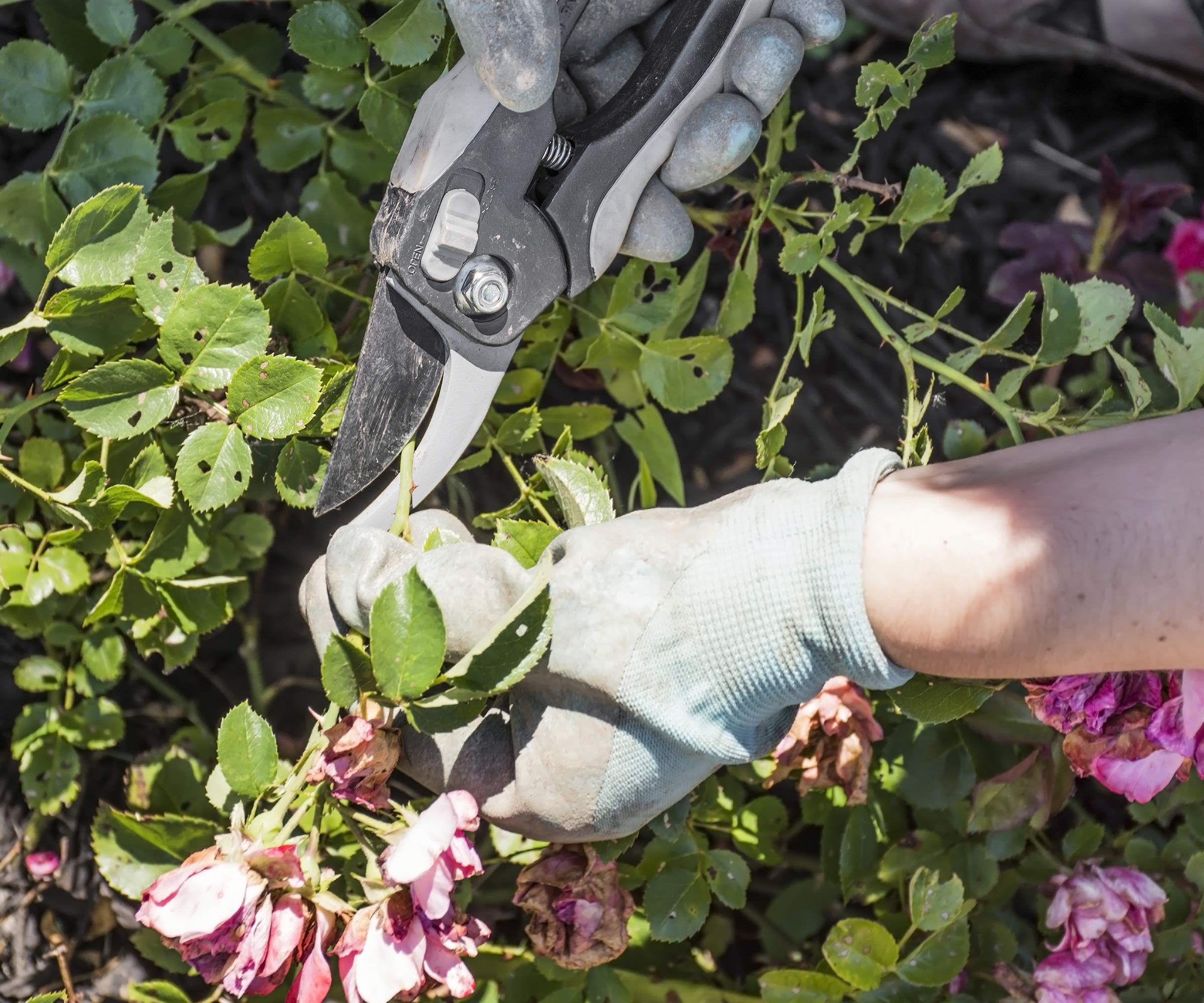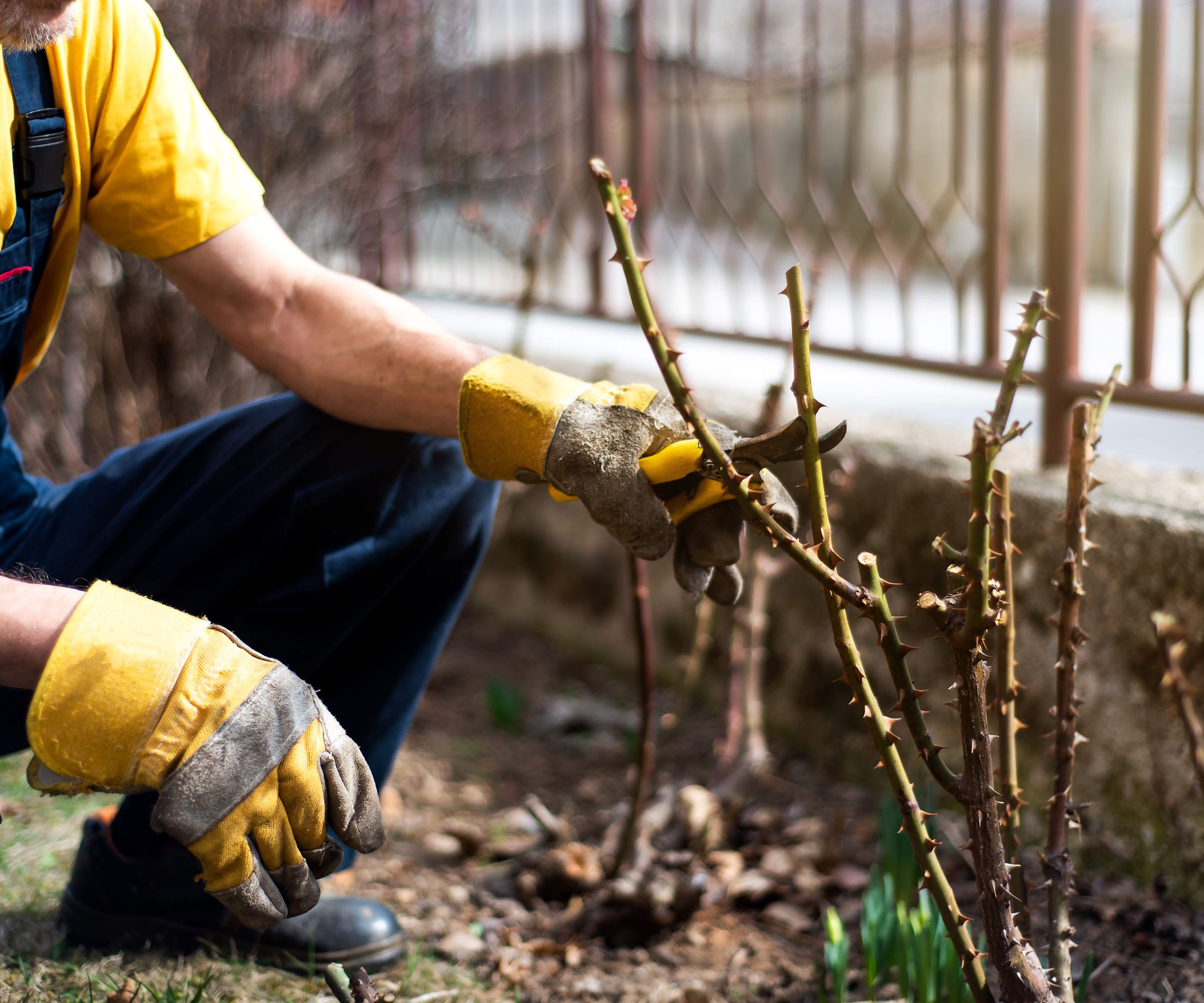When and how to prune drift roses to keep these compact bushes blooming
A little bit of pruning each year can go a long way


Drift roses are a modern cross between miniature and groundcover roses. This hugely-popular rose variety only grows to around two feet tall and, despite being small in stature, can provide huge pops of color for all sorts of backyard ideas.
There are drift roses available in shades of red, yellow, pink, and white. They are very versatile and work as long-blooming low-growing plants, either planted on their own in a rose garden or as part of a mixed flower bed.
If you are looking for new types of roses to grow, drift roses are low-maintenance and winter hardy in US hardiness zones 5-10. We take a close look at when and how to prune drift roses to ensure your plants are healthy and put on dazzling displays of stunning blooms.

Drift roses stay small in size, but make a big impact
Where to add drift roses to your backyard
Drift roses can be very useful if you plan to landscape with roses and want something low-growing, hardy, and beautiful. The plants will want a sunny spot in the backyard, ideally with 6-8 hours of sun a day.
Drift roses are versatile, though, and can also work well as part of a container garden on a sunny deck or patio. You can see the full range of drift roses available at Perfect Plants
When to prune drift roses

Deadheading and pruning drift roses are important in caring for these shrubs
Drift roses do not definitely require pruning, however, they do benefit from being trimmed and respond well to the attention. It is a good way to maintain the size of the roses, keep the plants healthy, and also ensure they put out a fantastic display of blooms throughout the coming season.
The ideal time for pruning drift roses is in late winter or early spring, just before the new growth starts to emerge on the plant. If you have not pruned yet but see the first leaves emerging, then it is time to head out with the tools.
Alex Kantor, the owner of Perfect Plants Nursery, says that the ideal months are ‘usually around March or April’ but it can depend on your US hardiness zone. He adds: ‘This timing allows for the removal of any dead or diseased wood while shaping the plant for a more compact and visually appealing appearance in preparation for the upcoming growing season.’
The only reasons to prune after early spring are to deadhead roses continually throughout the summer, to get an even longer display of fantastic blooms, and to remove any dead or damaged material you see through the season.
You want to avoid ever pruning drift roses during periods of extreme heat or cold, as this is a rose pruning mistake that can stress the plant. Pruning in late fall would also be a pruning mistake as it would stimulate new growth that would be damaged by the winter colds. This would leave the rose at increased risk of disease and potentially affect the overall cold hardiness of the shrub.

Alex has worked in the horticultural industry for over 20 years and grew up on the farm since his childhood years. Alex is an expert on landscape trees, shrubs, and indoor plants.
How to prune drift roses

Take out the tools to prune drift roses in late winter or early spring
The method for this rose pruning is very simple and will require only a few garden tools. All you require is a pair of pruning shears and a thick gardening gloves - such as these rose pruning gloves available at Amazon - to protect yourself from the vicious thorns. All tools need to be clean and sharp before use, to make clean cuts and avoid spreading any rose diseases around your garden.
- ‘To prune drift roses, it is recommended to start by removing any damaged or dead branches. This helps to encourage new growth and prevent disease from spreading,’ recommends Alex Kantor.
- ‘Next, thin out the center of the plant by selectively removing a few of the older canes. This helps to improve air circulation and light penetration, reducing the risk of fungal infections.
- ‘Finally, trim back the remaining canes by about one-third, cutting just above an outward-facing bud. This helps to promote outward growth and a fuller appearance.’
- The cutting back of any long stems helps create the natural compact shape and form of drift roses. Assess the shape as you are pruning, taking a step back for a look every now and again to make sure the shrub is balanced.
- Take the amount of potential regrowth into consideration when thinking how much to prune off. When it comes to drift roses, the experts at Star Roses and Plants, the company that bred them, claim that they will ‘usually triple in size by the end of the season’ after being pruned.
- How much you trim off will depend on how big you want the shrub to get, but drift roses are tough plants and can tolerate being pruned hard back, to around 6-8 inches high, annually in order to keep a compact shape.
- After pruning drift roses, it is beneficial to apply a good layer of mulch around the base of the shrub. This mulching layer will help to retain moisture in the ground, suppress weeds, and also add nutrients to the soil as it breaks down.

A pair of bypass pruners with a fully hardened, precision-ground steel blade that are ideal for lots of cutting tasks - including pruning roses - thanks to a low-friction coating that should make trimming easier
FAQs
Are you supposed to deadhead drift roses?
Just like with any other roses, deadheading is a beneficial and recommended task that can help to extend the blooming season and give you the most flowers each year.
Gabie DeSiena, lead staff horticulturist at Wilson Bros Gardens, recommends that, when pruning spent flower heads from drift roses, you ‘make your cut at the base of the flower stem’ and ultimately you then want to ‘cease pruning drift roses two months prior to the average first-frost date in your area’.
Drift roses are a modern cross between miniature roses and groundcover roses. The original types of miniature roses are ones that only grow up to 18 inches in height. These fantastic plants are ideal for small backyard ideas or growing in pots on a deck or balcony.
Sign up to the Homes & Gardens newsletter
Design expertise in your inbox – from inspiring decorating ideas and beautiful celebrity homes to practical gardening advice and shopping round-ups.

Drew’s passion for gardening started with growing vegetables and salad in raised beds in a small urban terrace garden. He has worked as a professional gardener in historic gardens and specialises in growing vegetables, fruit, herbs, and cut flowers as a kitchen gardener. That passion for growing extends to being an allotmenteer, garden blogger, and producing how-to gardening guides for websites. Drew was shortlisted for the New Talent of the Year award at the 2023 Garden Media Guild Awards.
-
 Extend the lifespan of your appliance with 5 simple but crucial washing machine maintenance tips
Extend the lifespan of your appliance with 5 simple but crucial washing machine maintenance tipsFrom cleaning the filters to keeping the door open, experts reveal the washer tips they swear by
By Andy van Terheyden Published
-
 These are the 6 must-have colors to decorate with in April 2025
These are the 6 must-have colors to decorate with in April 2025What do retro-inspired yellows and beautiful blues all have in common? They're on our hot list for the season ahead
By Sophia Pouget de St Victor Published